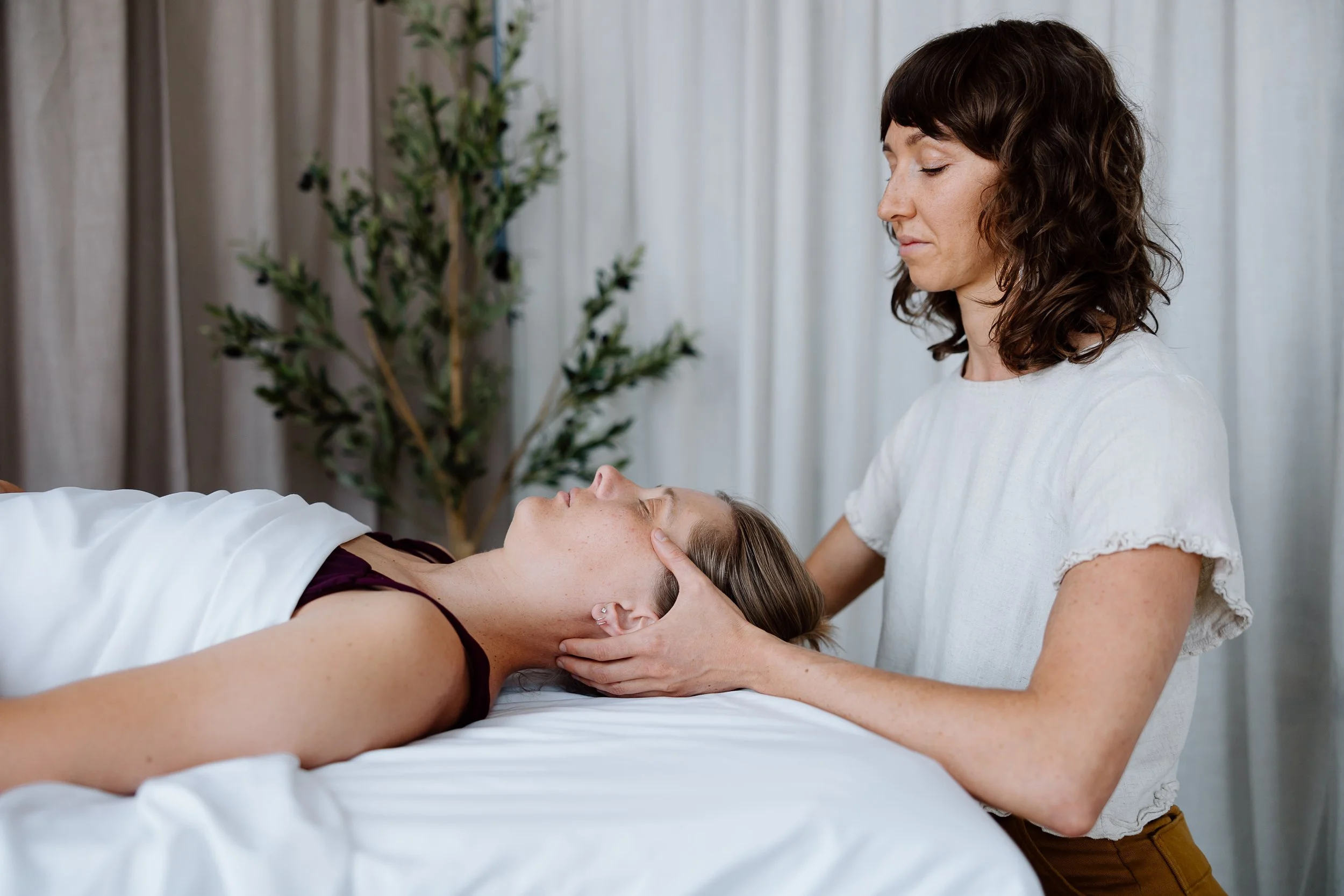Craniosacral Therapy
Following the deep rhythms of the body
What is Craniosacral Therapy?
History of CST
Craniosacral Therapy (CST) is rooted in the Osteopathic medical tradition. Dr. Andrew Still and his student, Dr. William Sutherland, both Osteopathic physicians and professors are largely credited with the development of CST.
Over the course of Sutherland’s practice and studies, he found that the shape of the supposedly immobile cranial sutures (the joints of the skull bones) were designed for subtle movement. He coined the term ‘primary respiration’ to describe the subtle expansion and contraction of the cranial bones, spine, and sacrum. As this movement unfolds, the cerebrospinal fluid washes the brain and spinal cord with nutrients and removes waste. This wavelike movement is foundational to our system’s health and is the basis of assessment in craniosacral therapy.
The development of modern Craniosacral therapy was largely inspired by Dr. Still’s time with the Shawnee Native Americans. There are similarities between cranial osteopathy and traditional Shawnee Bodywork practices. Although Dr. Still referred to his time with the Shawnee people in his discussions and writing, this significant aspect of CST’s history and development tends to not be given the credit it is due.
What to Expect
When receiving CST you can expect to be fully clothed, preferably with comfortable, loose fitting clothing.
The craniosacral system is made up of the bones, connective tissues, nerves, and fluids of your cranium (skull) and spinal area. During a session, the practitioner places their hands lightly on specific areas of the body and “listens through the hands” to the subtle rhythm of primary respiration and the flow of Cerebrospinal Fluid.
The practitioner’s attuned touch measures the way that other structures of the skeletal and visceral systems respond to this wave of movement, noting any patterns of restriction or inertia. The practioner can then offer sensitive and receptive feedback to bring balance, alignment, and greater freedom to the system. The craniosacral system is very responsive to gentle, sustained contact, and significant releases can occur over the coarse of a session.
Through sensitive, caring, and sustained touch it is common for people to experience increased embodiment, balance, relief of stress, and decreased pain.
Craniosacral Therapy supports the body to reorient to its inherent health and release deeply-held tension patterns.
Who is CST for?
Time and time again I have witnessed the therapeutic value of this work in helping people improve their quality of life. The gentle nature of craniosacral therapy makes it safe and appropriate for most conditions. This work is reported by clients to be effective in helping to relieve symptoms associated with:
Stress and Tension-Related Disorders
Post-Concussion Syndrome
Concussions and Traumatic Brain Injuries
Headaches
Vertigo
Jaw pain and TMJ disorders
Attention and behavioral syndromes
Chronic pain
Chronic fatigue
Fibromyalgia
Craniosacral Therapy is particularly gentle and well-suited work for the elderly, and those in fragile health. It can also be very supportive to prenatal and postpartum persons and can be useful in preparation, healing, and self-care for those in the birthing season.
How Often to Schedule?
This will be different for each client. Regular sessions support the greatest outcome and I suggest starting with 3 consecutive sessions, either weekly or every-other-week to give your body an opportunity to integrate the work more deeply. Then, we can re-assess to determine what else may be needed. Depending on the clients condition, more chronic situations may require more sessions over a longer period of time.
Many clients benefit from monthly maintenance sessions for overall nervous system support and wellness.




